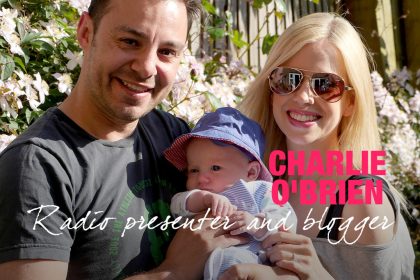The beginner’s guide to growing your blog traffic
So, you’ve started a blog. Now what? How do you expand your audience outside your mum and a handful of loyal friends? You need a simple plan to grow your blog traffic.
Growing your blog traffic is, in principle, quite simple. You find ways to get your blog content and links out into the big, wide world. But in practice it can seem dauntingly complex.
The beginner’s guide to growing your blog traffic
That’s just what we found when we launched Talented Ladies Club in April 2013. We knew practically nothing about blogging, let alone how to grow our traffic. So we stumbled along, learning what worked and, just as often often, what didn’t.
Over time though, we got better at it. We discovered ways to spread the word about what we were doing without spending a fortune on advertising. And by interviewing other professional bloggers we picked up other invaluable tips too.
Now we’re sharing that learning with you in our beginner’s guide to growing your blog traffic – an easy-to-follow (and implement) guide to getting your blog out into the world, and attracting scores of readers back.
Love more help growing your traffic? Find out how we hit 100,000 new visitors to our site a month here.
Be professional
Before you even start to show off your writing to the world, you need to get your blogging ducks in a row. And this means ensuring that your blog is as professional as possible. This includes:
- Proof reading every blog to ensure your spelling and grammar are correct.
- Being consistent – writing regularly, if possible once a week or more.
- Checking that your site navigation and links all work properly.
- Ensuring you have an About page that tells people who you are and what your blog is about.
- Making sure your site looks professional and your visual style is consistent.
Ideally you’ll write your blogs in advance, and get them into order using a simple blogging calendar (ours is a spreadsheet grid, with the w/c date on the left and the days across the top).
This way you can ensure that if you do have an off day or something happens and your precious writing slot disappears, you still have time to write before a blog is due. It also enables you to have a good spread of subjects or type of blogs, so you can get an overall picture of your postings.
Get into good writing habits
If you’re not used to writing regularly, you may find it a bit start-stop. One day you feel inspired to write and your blog comes to you easily, and is well-received. Other days you may struggle for hours to get out 200 words that no one reads.
The trick is practice. The more you write, the better you’ll get at it and the more natural you’ll find it. (You can read tips on how to write an interesting blog here.)
As a professional writer, I can’t afford to have off days or writer’s block. Of course there are times when it’s harder to get going, but I need to nonetheless. Clients don’t want to be told I wasn’t ‘feeling it’ today so haven’t completed their project!
The best way I have found to work past writer’s block is just to write. Don’t get scared by an empty screen or notepad, just write. Write anything that comes into your head on the topic you’re supposed to be writing about. Yes it will be rubbish but that’s fine – you don’t need to show anyone or use it. You can just delete it or throw it away later.
But gradually you’ll find that your writing gets less rubbish and starts making more sense. Eventually you’ll click into what you’re supposed to be doing (and if nothing see get bored of writing gibberish) and create something worth using. This is also, incidentally, a good trick to beat procrastination.
(You can read more tips about how to get started as a writer here.)
Write in blocks
Once you do start writing, you may find you get into flow – that magical state when words almost seem to just come to you without trying. It’s easy, seamless and you produce great work.
When that happens, try not to stop! I tend to find that once I finish a blog or project, my mind is already onto my next one, and I can steam through several in one sitting when I get going.
So if possible, write your blogs in blocks. That is, set a day aside for writing and challenge yourself to write two or more (you’ll find the more you write the faster you get) blogs.
Not only will you end up with great writing, but you’ll have that lovely feeling of accomplishment and can satisfyingly plan out your blogging calendar.
Understand your audience
One key element to writing great blogs that have the potential to reach a wide audience is knowing who that audience is. You need to have a really clear idea of what type of person is going to read your blogs, and why.
Do they find your funny? Want tips or insights? Like a peep inside your daily life? Or just like your writing style?
When you know who reads you and why, you can make sure you write more of the type of blog they want to read. You’ll also know where to reach out to them. You’ll understand where they hang out online, and what kind of carrot to use to get them over to your blog in the first place.
Get social
Once you’re confident you have a good stock of great blogs to share, and a clear idea of who will read them, then you need to go out and find your readers. And a great place to start is social media.
Most of us today use social media in some form or another – my dad is in his 70s and even he’s on Facebook! And the great thing about social media is that it’s free to use. All you need to do is find the time to get good at it and start interacting.
When we started Talented Ladies Club we began promoting our articles on Twitter, Pinterest and Facebook. Once we’d got our head around it, Twitter became our best source of traffic of the three – and most days still is. (You can read our beginner’s guide to Twitter here and watch a video sharing the four secrets to growing your followers on Twitter here.)
We also get a steady stream of traffic from Facebook and Pinterest. (You can learn six quick tips to get amazing results from your Facebook page here.) More recently we’ve also started using Facebook ads to help spread the word about our monthly membership club, with great results. (Find out how to boost your sales with Facebook retargeting ads here.)
We could write a whole new article on promoting your blog through social media! But to keep this one to a readable length here are few key tips:
- Bear your audience in mind when writing and sharing posts or content.
- Remember the 80/20 rule – ensure 80% of your posts are NOT just self-promotion.
- Be proactive. Don’t wait for people to follow or like you or engage with you – reach out to them first.
- Use free scheduling tools like Hootsuite and Facebook scheduling to keep a steady stream of posts.
- Try to be interesting or useful in everything you write or share.
- Identify influential people in your niche and make a point of connecting with them.
- Always reply to comments on your social media site (and your blog) as it increases interaction.
In addition to social, when you’re guest blogging it is important to have detailed and structured backlink building strategies so that you will keep the perfect ratio of anchor texts across your article.
Start guest blogging
One of the golden rules of growing your blog traffic is not to hog all your best work. As much as you want your own blog to showcase the best of your writing, you need to save some to share on other websites, so new people can discover you too.
Guest blogging is a proven way to spread the word about what you do, and drive traffic back to your own blog. It also helps your SEO.
To get started, make a list of blogs that your ideal readers may read (this is why it’s important to know your audience). Then investigate whether they accept guest blogs. Some may do, others won’t. If you can’t see it on their blog anywhere, email them and ask politely. You have nothing to lose.
Some blogs may charge for guest blogs, others, like us, will publish them for free. We personally have never paid for guest blogging ourselves – partly because as a self-funded start-up we haven’t had the budget! But also we have never been short of free guest blogging opportunities so there has been no need.
If you do secure a guest blogging opportunity, make sure you share it across your social media sites. And hopefully the website hosting your blog will do the same across theirs, further helping get your name out there. (As an added bonus you should be able to pick up new social media followers too.)
But if you do guest blog, make sure you always use unique content. As a general rule, don’t ever give someone a duplicate of a blog on your own site. Why? Because it will confuse Google. They won’t know which site to use in search listings – and they may conclude the other site, especially if it’s more established and has better SEO than yours, is the ‘proper’ version and only show that in search results.
If you do offer someone a duplicate version of your blog, ask that they use a rel=canonical link, which lets Google know your page is the original (you can learn more about rel=canonical here). If they say no, you need to weigh up how important the opportunity is to you. We’ve turned down offers for our content to appear on big websites because they refused to use a rel=canonical link.
The same applies to syndication. Some sites may offer to syndicate your blogs (even possibly paying you for them). On the plus side this could potentially expose you to a massive new audience. But if they don’t use rel=canonical links (which they’re unlikely to – they want the SEO benefits of your content!) they’ll probably get full credit from Google for them, and you could be in the frustrating position of seeing your blogs rank highly on Google on someone else’s site!
Keep at it
There are plenty of practical tips in this article. But if we were to boil our wisdom and experience down to one simple piece of advice, it would be to just keep at it.
Over the past couple of years, we’ve seen blogs come and go. We’ve seen fantastic blogs emerge in a blaze of glory, only to fizzle out after a few months. We’ve also seen more modest blogs plod on month after month, slowly growing their readership and getting better at what they do – until they finally achieve the success they deserve.
And that’s what blogging is all about. Yes there are the amazing overnight success stories you read about occasionally. But these are the exception (there’s also often more to them than meets the eye – many ‘overnight’ successes are actually the result of years of hard work… the overnight angle just makes a better press story).
Most successful blogs have weathered many storms. They’ve survived months of minuscule jumps in reader numbers. They’ve endured the frequently-disheartening journey of learning what traffic-driving techniques do and don’t work. They’ve kept going when it felt like no one was reading, or ever would.
For most people blogging is a long game. And for a long time it may be thankless. So make sure you enjoy your blog, because sometimes passion alone is all that will keep you going, and have the belief, courage and persistence to keep at it.
Because if you follow our advice in this article, and you’ve got your blog right, you will get somewhere eventually.










